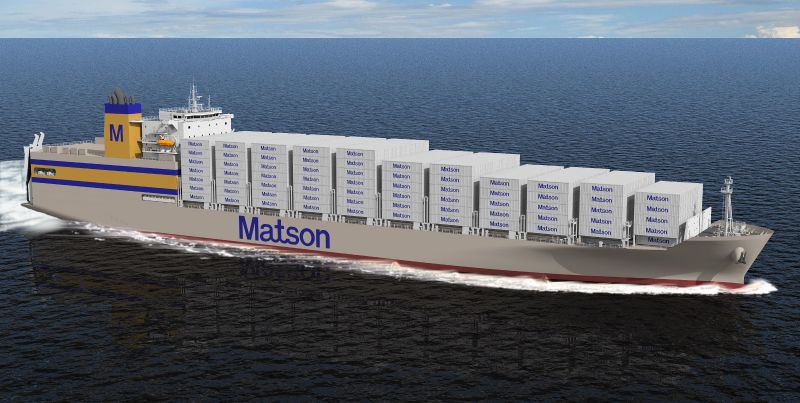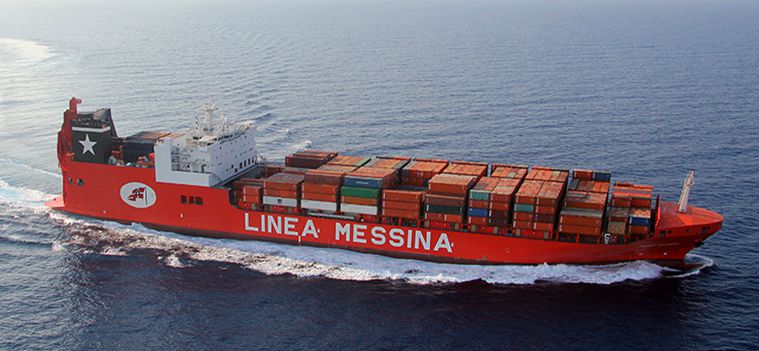Matson Orders Two Jones Act Con/Ros from NASSCO
On Friday, Matson Lines announced that it has placed a $500 million order for two new Jones Act con/ro vessels for its Hawaii service, to be built by General Dynamics NASSCO in San Diego.
The vessels will be named Lurline and Matsonia after earlier vessels from Matson's long history of service to the islands. They will replace three existing vessels on the run, allowing Matson to finish retiring seven aging steamships which would not be able to comply with emissions requirements after the end of this decade.
Daewoo is contributing to the design and to the shipbuilding technology used, NASSCO says. The new 870-foot ships will have a capacity of 3,500 TEU and 800 vehicles. They will be built out with double hull bunker tanks, fresh-water ballast and will be Tier III compliant and LNG-ready. Delivery is planned for 2019 and 2020.
Matson says that among other financing vehicles, funding could include federally-guaranteed vessel finance bonds (Title XI bonds).
Matson operates U.S. flag vessels from the Pacific coast to Hawaii, the outlying Pacific islands and to China.
The $250 million-per-ship order reflects the premium associated with U.S.-built Jones Act vessels, which are permitted to trade between U.S. ports if they are flagged in the U.S., American-owned and American-crewed.
As a point of reference, Ignazio Messina Lines' eight comparable con/ros (3,000 TEU, large ro/ro holds aft) were purchased from South Korean yards at $75 million per ship in 2009 and 2012.
 Image courtesy General Dynamics NASSCO / Matson
Image courtesy General Dynamics NASSCO / Matson

that matters most
Get the latest maritime news delivered to your inbox daily.
 Image courtesy Linea Messina
Image courtesy Linea Messina
In addition to its large commercial orderbook, General Dynamics NASSCO is one of only eight major shipyards contracting with the U.S. Navy for shipbuilding and ship repair, and Assistant Secretary of the Navy for Research, Development & Acquisition Sean Stackley testified last year that it was one of the two yards that the Navy considered most essential to the defense industrial base. He voiced concern that it faced difficulties if it could not secure new orders: “NASSCO is a contract away” from “peril,” he warned at a hearing of the Senate Armed Services Seapower Subcommittee. High-ranking defense officials have long argued that commercial ship construction is an important part of keeping yards’ orderbooks full, thereby retaining America’s naval shipbuilding capacity.
